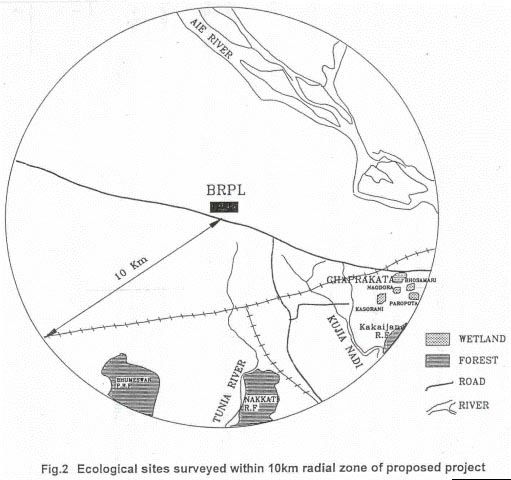Ecological Studies
|
Within the above defined zone, areas of ecological significance have been identified using the following criteria evolved by Turnbull (1992). 1. Terrestrial habitats 2. Aquatic habitats 3. Habitat for rare and endangered species 4. Unusual landform 5. Areas specifically designated as conservation units Based on the criteria mentioned above, the ecological areas within 10km radius of the project have been determined and listed in Table 3. Table 3. Status of ecological areas represented within the 10km radial zone.
The areas identified for specific observations on faunal status, floral diversity and habitat quality within the 10km radial zone (Fig. 2) of the proposed site are listed in Table 4.
Table 4. Areas surveyed within 10km radial zone of the proposed site.
Each selected site (ecological area) was extensively surveyed to evaluate the existing status of terrestrial wildlife habitats in forested patches and the aquatic habitats comprising of lakes, rivers and ponds. The ecological areas identified during the initial phases of survey were revisited several times for collecting detailed information on natural environment. Information on vegetation structure, animal evidences and existing levels of biotic pressures was collected during the field survey. Additional information on occurrence of wildlife species was also elicited from local people and was relied upon after thorough validation. Efforts to collect adequate field based information were fairly constrained. Political insurgency limited our movements in the study area. Some gaps in the information were overcome by discussions and interactions with the knowledgeable persons from the NGO's and academic institutions. |
Last Updated: September 30, 2015










